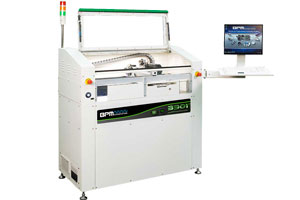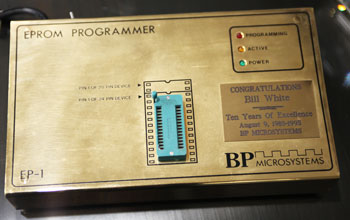Semiconductor devices are an integral part of modern electronics, powering everything from smartphones to computers to automobiles. These tiny devices are at the heart of all electronic circuits, providing the necessary computing power to perform a wide range of tasks.
However, in order for these devices to function properly, they must be properly programmed. This process can seem daunting for those new to the field, but with the right knowledge and tools, anyone can learn to program semiconductor devices.
Start with the End
Choosing the right chip for a project can be challenging, especially when supply chain constraints are taken into consideration. Here are a few things to consider when making this decision:
- Availability: It is important to consider the availability of the chip in the market. If a chip is in high demand and has a limited supply, it may be difficult to obtain and may have longer lead times. This can be a major constraint in the design process, as it can delay the development of the product or raise the cost.
- Cost: The cost of the chip is also an important factor to consider, especially when working within a budget. Some chips may be more expensive than others, which can affect the overall cost of the product.
- Technical specifications: The technical specifications of the chip, such as its processing power, memory capacity, and communication interfaces, must be taken into account to ensure that it meets the requirements of the project.
- Manufacturers: It is important to consider the reliability and reputation of the chip manufacturers. A reputable manufacturer is more likely to provide consistent quality and support for the chip.
- Second source: It is always good to have a second source for the chip. This will ensure that the project is not affected by the lack of availability of the chip from a single supplier.
- Alternatives: It is important to research and consider alternative chips that may be able to meet the requirements of the project. Sometimes a newer or less well-known chip may offer similar or better performance at a lower cost or with less lead time.
- Support: Is the device supported by the programmer you’ll be using? If the goal is scaling to production levels, don’t choose a development board, but something that can scale up to production levels.
- Obsolescence: It’s important to consider the obsolescence of the chip, i.e. the length of time that the chip will be manufactured and available in the market.
By considering these factors and researching different options, it is possible to choose a chip that meets the requirements of the project and is also available and affordable within the constraints of the supply chain.
First Steps
The first step in programming a semiconductor device is to determine the type of device you are working with. There are many different types of semiconductor devices, including microprocessors, microcontrollers, and memory chips. Each of these types of devices has its own unique set of programming requirements, so it is important to understand the differences between them.
Understanding the type of semiconductor device you are working with is crucial in order to properly program it. Different types of devices have different capabilities, resources, and programming requirements.
Microprocessors are devices that are capable of performing complex arithmetic and logic operations. They are the “brain” of a computer and are used in devices such as personal computers, laptops, and servers. They are typically programmed using high-level programming languages such as C or C++ and require specialized software development tools such as compilers, debuggers, and integrated development environments (IDEs).
Microcontrollers, on the other hand, are smaller, less powerful devices that are often used in embedded systems, such as appliances, automobiles, and industrial control systems. They are typically programmed using low-level languages such as assembly or C and require specialized development tools such as debuggers and in-circuit emulators (ICEs).
Memory chips, such as flash memory, are used for storing data in electronic devices. They are typically programmed using specialized software development tools such as flash programmers.
It is important to understand the differences between these types of devices, as the programming requirements and tools for each type of device may vary. For example, programming a microprocessor will be different than programming a microcontroller, and also programming a flash memory chip will be different than programming a microcontroller.
It is also important to consult the device’s documentation and consult the manufacturer’s website for specific programming requirements and guidelines. This will ensure that you have the correct tools and knowledge to program the device correctly and efficiently.
Programming Tools
 Once you have determined the type of device you are working with, the next step is to gather the necessary tools. These may include a computer with the appropriate software and hardware, such as a programmer or debug board. You will also need a set of development tools, such as a compiler or debugger, to help you write and test your code.
Once you have determined the type of device you are working with, the next step is to gather the necessary tools. These may include a computer with the appropriate software and hardware, such as a programmer or debug board. You will also need a set of development tools, such as a compiler or debugger, to help you write and test your code.
The tool should be chosen with scalability in mind. If you’re programming chips for just a handful of installations, your options are plentiful. But if your plan requires thousands or millions of programmed parts, choose a device programmer that can scale to your needs. Often developers start with a manual programmer where the operator inserts the devices by hand. When quantities go above 50,000 per year, an automated programming system is a must. Automated systems also give you additional options, such as media transfer, marking, and inspection.
Programming Code Languages
Next, you will need to learn the programming language that is used to write code for the specific device you are working with. This may be a proprietary language specific to the device manufacturer, or it may be a more widely used language such as C or C++. It is important to become familiar with the syntax and structure of the language, as well as any libraries or functions specific to the device.
Once you have gathered the necessary tools and learning the programming language, the next step is to write and test your code. This process involves writing code that performs the desired functions, such as controlling a device or processing data. It is important to test your code thoroughly to ensure that it is functioning correctly and free of errors.
Finally, once you have written and tested your code, you can program the device by uploading it to the device using the appropriate programming tools. This process may involve connecting the device to a computer or using a specialized programming board.
Programming semiconductor devices can seem intimidating for those new to the field, but with the right knowledge and tools, anyone can learn to program these important devices. By following these steps and practicing regularly, you can quickly become proficient in semiconductor device programming and begin building your own electronic circuits and devices.
Learn More
There are many resources available for learning about programming semiconductor devices, including books, online tutorials, and educational courses. Some popular sources for learning about semiconductor device programming include:
- The website of the device manufacturers may provide documentation and tutorials specific to their devices.
- Online forums and communities dedicated to electronics and semiconductor device programming, where you can ask questions and learn from others.
- Books and courses on the subject, such as “Programming and Customizing the AVR Microcontroller” by Dhananjay Gadre or “Programming and Customizing the PIC Microcontroller” by Myke Predko.
- Websites such as Instructables and Hackster.io, provide a wealth of information and examples on electronics projects and programming techniques.
Additionally, many universities and colleges offer courses on semiconductor device programming, which can be a great way to gain a deeper understanding of the subject.
Best Private Universities
- Massachusetts Institute of Technology (MIT): Located in Cambridge, Massachusetts, MIT is consistently ranked as one of the top universities in the world for science, technology, engineering, and mathematics (STEM) fields.
- Stanford University: Located in Stanford, California, Stanford is known for its strong programs in business, engineering, and computer science.
- Harvard University: Located in Cambridge, Massachusetts, Harvard is one of the oldest and most prestigious universities in the country, and it offers a wide range of undergraduate and graduate programs in a variety of fields.
- California Institute of Technology (Caltech): located in Pasadena, California, Caltech is a small, private research university known for its strong programs in science and engineering.
- Princeton University: located in Princeton, New Jersey, Princeton is one of the oldest universities in the country and is known for its undergraduate liberal arts program and graduate programs in a variety of fields, including engineering and the sciences.
- University of Chicago: located in Chicago, Illinois, UChicago is known for its strong programs in economics, business, law, and the sciences.
Best Public Universities
There are many excellent public universities in the United States that offer high-quality education at an affordable cost. Here are a few examples of highly-ranked public universities in the US:
- The University of Texas at Austin
- University of California, Berkeley
- The University of Michigan, Ann Arbor
- The University of Virginia
- University of North Carolina at Chapel Hill
- University of Wisconsin-Madison
